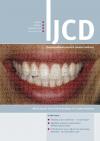International Journal of Cosmetic Dentistry

- Cover Date:
- September 2011
- Print ISSN:
- 1754-2766
- Vol:
- 2
- Issue:
- 1
Direct Posterior resin restorations: everyday dentistry to accreditation standard
Introduction
This 30-year old female patient had neglected her dental health, but despite bad experiences as a child, she had decided it was time to return to dentistry. In such a case the dentist is in a delicate position as any further negative experiences may well result in the patient failing to attend again, thereby missing out on important treatment. treatment was found to be necessary. The patient chose direct composite restorations as the preferred restorative approach if possible. The paperwork; outlining the reasons for our choices, ensuring informed consent and outlining the ï¬nancial commitment involved was then completed and an appointment scheduled for the following week. was left to be thoroughly excavated with hand instruments to reduce risk to pulps, and to conï¬rm that no soft, infected dentine remained. Hand instrumentation was further utilised to remove any unsupported enamel prisms at the cavity margins and to increase the surface area of the enamel for bonding in this area.1 However, it is not advisable to create a small bevel on the occlusal cavosurface margin as this increases the width of the cavity preparation and may infringe upon centric holding stops thereby increasing the wear rate of the restoration.2 Loupes are particularly useful at this stage. Rubber dam (Hygienic non latex, Coltene Whaledent) was placed, and the cavities were sandblasted using a Prepstart air abrasion machine. The pressure was set at 40psi, the aluminium oxide granules were 27 micron diameter and the nozzle size was 0.1 mm diameter. The aim of this process was not to prepare the cavity further, but to remove any lose debris and to cleanse the cavity thoroughly to allow the best possible seal between the restorative material and the prepared tooth.
Medical and social history
This included the patient describing her lifestyle as ‘hectic’ but that she was otherwise ï¬t and well. Radiographs revealed that generalised restorative work was required, speciï¬cally in teeth 34, 35 and 36 which had gross caries beneath old amalgam restorations.
Main complaint
The treatment described here was part of a comprehensive treatment plan involving hygiene therapy, general restorative work and culminating in tooth bleaching and a renewed resolve to maintain the teeth for the future. In the lower left quadrant, old amalgam restorations with signiï¬cant recurrent caries were replaced with composite resin.
Clinical procedure
At the start of the appointment, the treatment plan was outlined once again to ensure the patient understood the work to be provided and the associated reasons were conï¬rmed. Following local anaesthesia the old restorations and gross caries were removed with high speed and low speed handpieces, both utilising water cooling. Speciï¬c care was taken to clear the caries from the cavity walls; speciï¬cally the amelo-dentinal junction, where lesions will often advance along the line of weakness. The caries present in the floors of the cavities close to the pulp horns
Diagnosis and treatment plan
It was necessary to replace the inadequate amalgam restorations but also, due to the signiï¬cant caries present, the patient was warned of the possible need for endodontic therapy, either during this course of treatment, or in the future. Possible alternative treatments discussed included direct composite restorations, indirect composite inlays and indirect porcelain inlays, and possibly full crowns if endodontic
Dentine sealing and cavity lining
Self etching resin cement (Relyx Unicem, 3M) was painted into the cavity with the aim of completely covering, and thereby sealing, any freshly prepared dentine. Care was taken to keep the enamel margins free from contamination with the
september 2011 â— vol.2 no.1
33
- Article Price
- £15.00
- Institution Article Price
- £
- Page Start
- 33
- Page End
- 37
- Authors
- Ken Harris
Articles from this issue
- Title
- Pg. Start
- Pg. End
